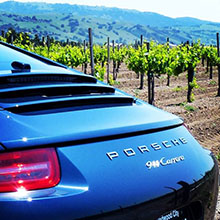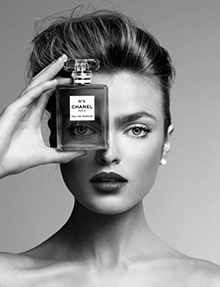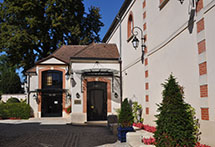|
| |
| Recent Labels |
| |
| Non-Vintage |
| |
| Nicholas Francois Billecart |
|
|
|
|
| |
| |
| |
Billecart-Salmon Brut Rose' Champagne
Billecart-Salmon Rose' is Billecart-Salmon's non-vintage rose'. It is a very elegant, well balanced rose' with a dry finish. The pinots show through. Billecart-Salmon Rose' can be found at many retailers.
| Billecart-Salmon Rose' |
| Type |
|
|
|
|
| Category: |
Rose' |
Prestige Cuvée: |
No |
|
| |
| Ratings (on a scale of 100) |
|
|
|
|
| Champagne 411 |
92 |
Nov. 2013 |
|
Average Retail Price |
| Wine Enthusiast |
94 |
12/01/13 |
|
(750 ml bottle) $80 |
| Wine Spectator |
92 |
11/15/13 |
|
|
|
|
|
|
|
|
Tasting Notes
Appearance: Pale salmon pink with delicate steady bubbles.
Aroma/bouquet: Strawberry, raspberry and citrus. Minerality and just a hint of toast.
Palate: Strawberry, raspberry, flinty minerality and subtle hints of yeast..
Additional comments: Very elegant, crisp acidity with dry finish, well balanced. Pinots show through.
When to drink: Billecart-Salmon Rose' Champagne is ready to drink at release through the next 4 years.
| Rose' Details
Label: Billecart-Salmon Brut Rose'
House/Winery: Champagne Billecart-Salmon
Wine Category: Sparkling Wine
Region & Country: Champagne, France
Type (Style): Non-vintage
Sweetness Level: Brut
Dosage: 9 grams per liter or less
Prestige cuvée: No
Vineyards: NA
Grapes: 40% Chardonnay, 30% Pinot Noir, 30% Pinot Meunier
Alcohol: 12%
Go to Champagne Details for a description of the above types, characteristics, and grapes. |
Billecart-Salmon Rose'
Production
Billecart-Salmon uses the méthode champenoise for their champagne production. The Rose' is composed of 40% Chardonnay, 30% Pinot Noir and 30% Pinot Meunier with about 8% still red wine from the Pinots. Dosage is typically about 9% or less. The closure for Billecart-Salmon Brut Reserve is DIAM cork rather than natural cork. DIAM is a type of cork made by combining tiny granules of cleaned natural cork with synthetic microspheres. It minimizes faults such as TCA that sometimes occurs with natural cork.
Billecart-Salmon uses a winemaking technique called double debourbage. Solids from the juice settle out to clarify, then a second 'cold' settling occurs at about 40 degrees F for at least 48 hours after pressing. This process ensures the purity of the juice prior to fermentation. The fermentation process typically takes place over a minimum of 3 weeks at a temperature not to exceed 57 degrees Fahrenheit, longer than the typical fermentation at most houses of 1 week at about 68 degrees Fahrenheit.
|
|
|
| Le Guide Hachette des Vins |
2009 |
1 Star |
| |
|
|
| Le Guide Hachette des Vins |
2005 |
2 Stars |
| |
|
Coup de coeur |
| |
|
|
| Le Guide Hachette des Vins |
2004 |
1 Star |
|
|




